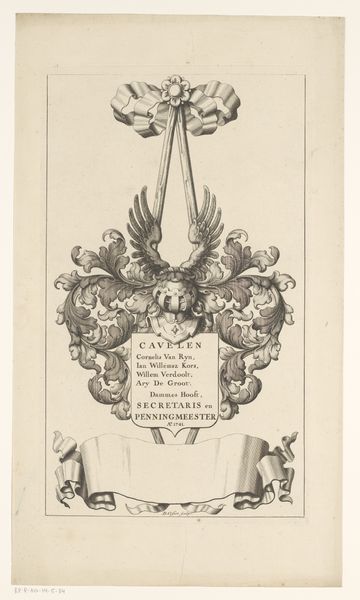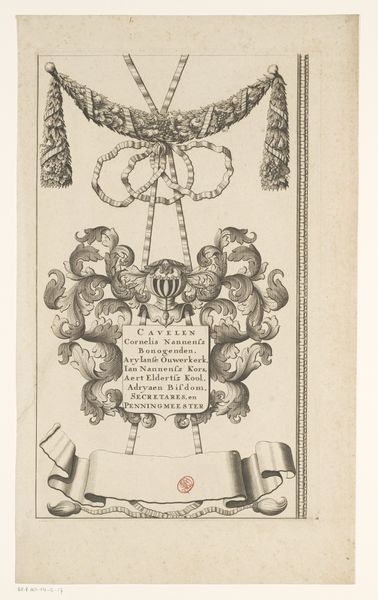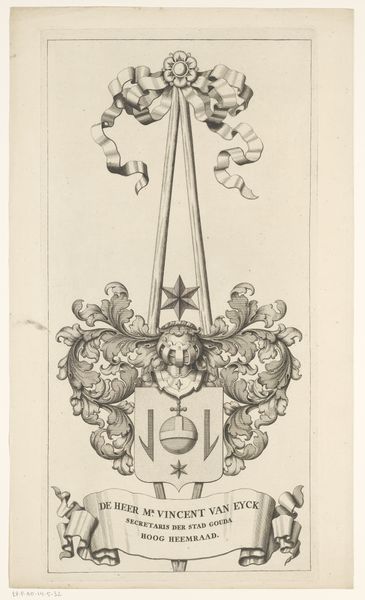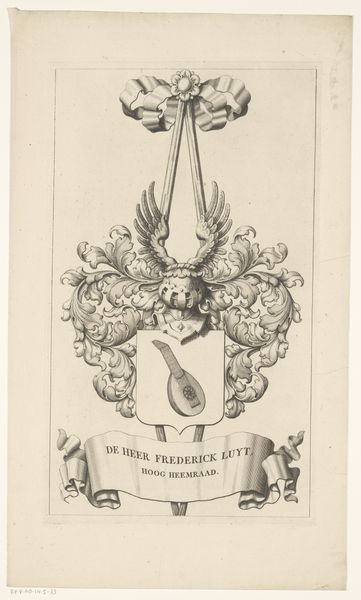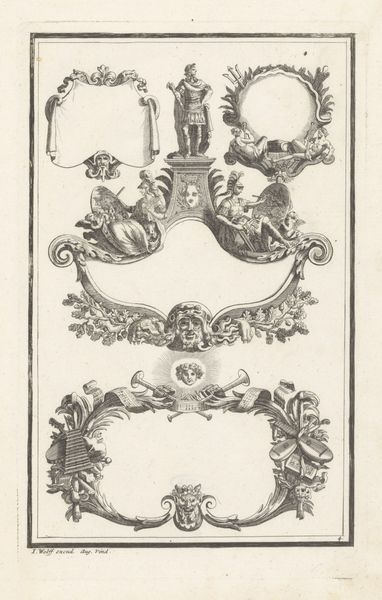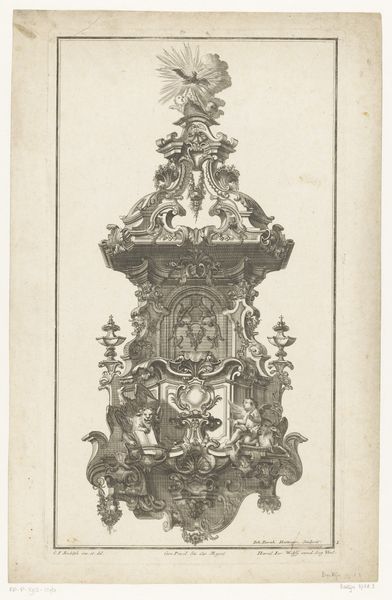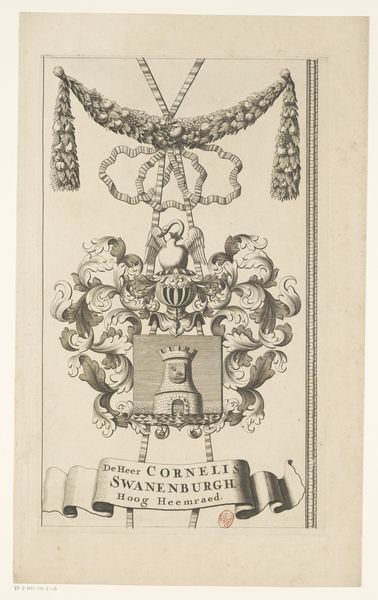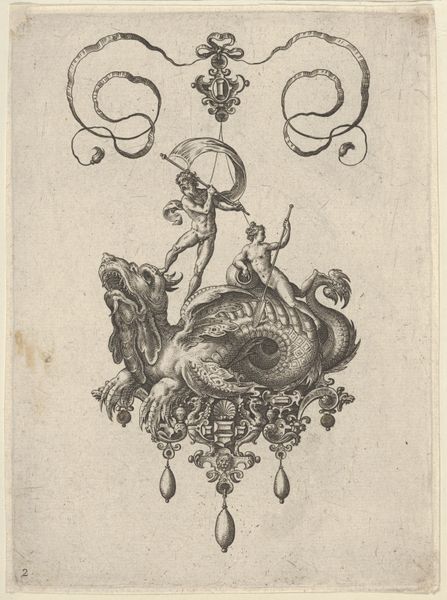
Kaart van het Hoogheemraadschap van de Krimpenerwaard (deel wapenrand) 1683 - 1741
0:00
0:00
print, engraving
#
baroque
#
pen drawing
#
dutch-golden-age
# print
#
old engraving style
#
geometric
#
engraving
Dimensions: height 445 mm, width 265 mm
Copyright: Rijks Museum: Open Domain
Curator: The detail in this print is astonishing. Created between 1683 and 1741, this particular portion is titled "Kaart van het Hoogheemraadschap van de Krimpenerwaard (deel wapenrand)" which translates to Map of the Krimpenerwaard High Water Authority, specifically, a fragment depicting a heraldic border. It comes to us via David Coster who gave us a rich illustration rendered through engraving. Editor: It’s interesting to see such a traditional, almost ceremonial depiction rendered as a print. I find myself drawn to the materiality of it. It must have taken tremendous skill to create this intricate design with such fidelity to the coat-of-arms tradition through printmaking. Curator: Absolutely. The print situates itself perfectly within Dutch Golden Age aesthetics, an era profoundly shaped by sociopolitical factors and of the emergent merchant class vying for authority within civic infrastructure. Here the Krimpenerwaard, a district known for land reclamation and agriculture is laying claim to itself by showcasing the infrastructure supporting these activities. Editor: What I notice is how this image mediates craft and industrialism. We have a hand-engraved image produced through laborious material practices used to signify and broadcast ideas of authority and infrastructure and that becomes quite revealing regarding power and representation at that time. I am especially interested in the process; imagine the plates that bore this image. How were they composed, printed, used, and what material constraints and conditions produced this particular expression? Curator: Well, to that point, I wonder about the choice to represent a pastoral scene; it feels deliberately old-fashioned, an appropriation, maybe, given the contemporary technologies leveraged in water management at the time. In many ways the Baroque details present here clash with contemporary notions of land as industry. It creates an immediate tension for modern viewers accustomed to landscapes being categorized within aesthetic or even commercial frameworks. Editor: Right, a key part of baroque sensibilities involve ornamentation and opulence. Its placement here creates a curious parallel between the natural elements and the built infrastructure designed to master it. Curator: Exactly! Reflecting on how the High Water Authority employed imagery as both record and propaganda reveals complex ties between art, nature, and politics in 17th and 18th century Dutch society. Editor: Considering this piece, its material origin, how it represents technology through the lens of both land reclamation and print-making leaves one grappling with production, meaning, labor and power dynamics, which provides quite an insight into our present era of post-industrial landscapes.
Comments
No comments
Be the first to comment and join the conversation on the ultimate creative platform.
